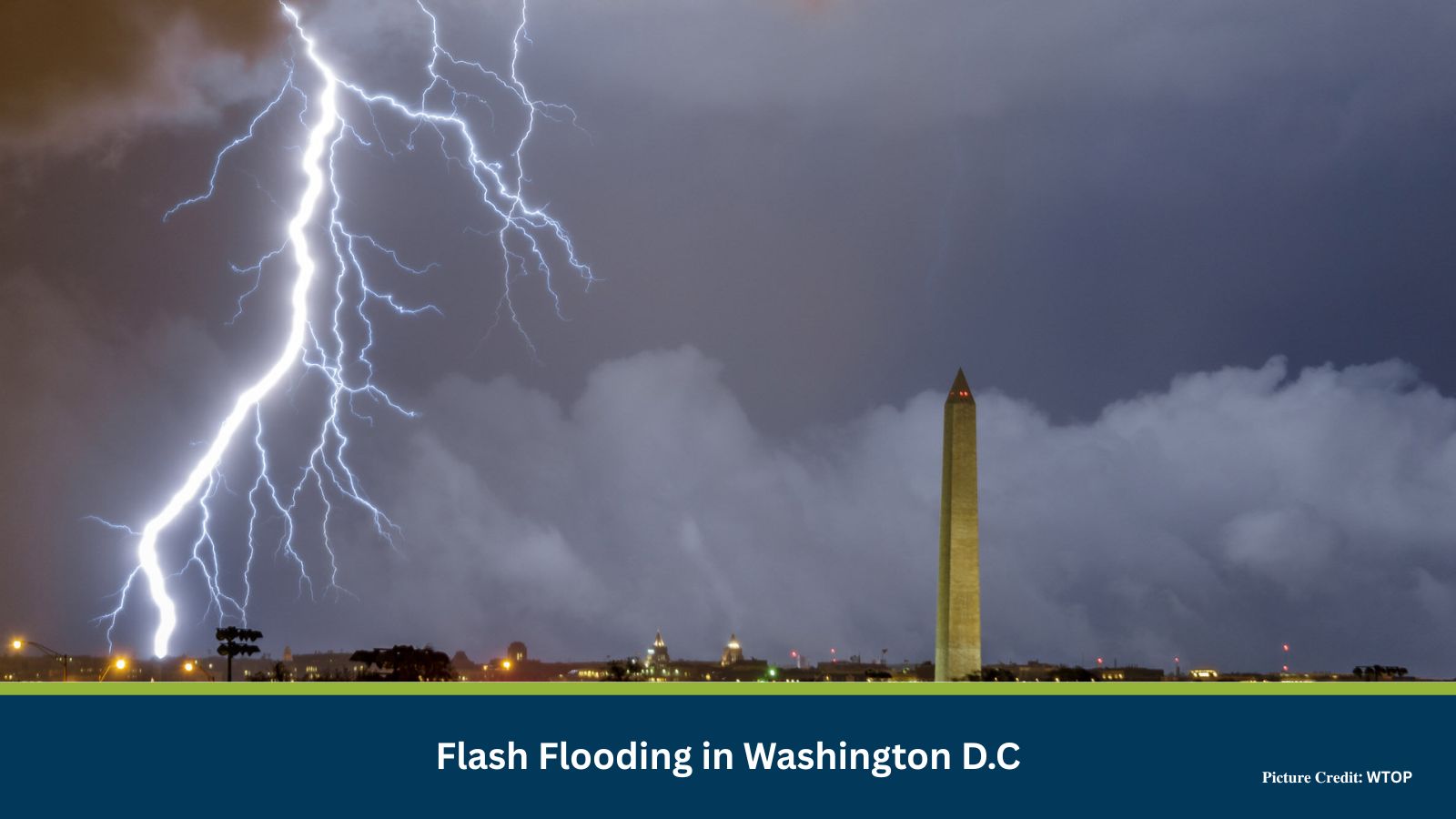This natural disaster risk advisory assesses the flash flooding incident in Washington D.C. triggered by severe storms on 10 July 2025. Urban infrastructure vulnerability, recurring storm impacts, and the capital’s national importance combine to elevate the risk level. The report is intended to support continuity planning, emergency response readiness, and public communications.
What is Risk Analysis in the Context of Urban Flooding?
Urban flooding risk assessments evaluate how sudden rainfall impacts transportation, utilities, business continuity, and public safety. They help local governments, corporations, and residents respond efficiently to both immediate threats and long-term vulnerabilities—especially in politically and economically strategic cities like Washington D.C.
Executive Summary: High Risk Level
- Date of Incident: 10 July 2025
- Location: Washington, D.C., United States
- Risk Category: Natural Disasters
- Severity Score: 4/5
- Confidence Level: 90%
Flash flooding triggered by a short but intense storm system has caused transport shutdowns, utility failures, and disruption to business operations in central Washington D.C. Historically, even modest rainfall overwhelms the city’s drainage infrastructure, with the current situation closely resembling high-impact events from 2023 and 2024. Recovery is expected within 72 hours, though full restoration of affected services could take up to a week.
Known Hotspots and Sensitive Areas
– Federal Triangle and U.S. Capitol Complex
– Rock Creek Parkway and Constitution Avenue
– Washington Metro (especially low-lying Red and Blue Line stations)
– Surroundings of the White House, Union Station, and the National Mall
– Potomac and Anacostia Riverbanks
– I-395 underpasses and tunnels
Impact on Transportation and Services
- Road Access: Numerous arterial roads including Rock Creek Parkway and I-395 Southbound tunnel have been submerged or closed. Commuter delays are widespread.
- Public Transport: WMATA Metro services have experienced station-level flooding and line suspensions. Metrobuses face detours, and access to Amtrak at Union Station is constrained.
- Utility Services: Localized power outages reported across Pepco’s grid. Risk of water main breaks and sewage overflow into Potomac and Anacostia Rivers.
- Government & Business: Federal buildings, museums, and private enterprises in low-lying zones report temporary closures and remote work activations.
Recommended Actions
- Activate Remote Work Protocols: Enable WFH for non-essential personnel and circulate commute status via internal alert systems.
- Secure Critical Infrastructure: Raise server racks and sensitive documents above ground level; ensure off-site data backups and deploy physical flood barriers.
- Review Business Continuity Plans: Reroute critical operations, shift to remote engagement, and notify clients of potential delays.
- Deploy Post-Event Recovery Teams: Assign rapid assessment teams across facilities to document damage and prepare insurance claims.
Emergency Contacts
- Police: 911
- Fire Department: 911
- Ambulance: 911
- D.C. Emergency Services: +1 202-727-6161
- Official Website: https://hsema.dc.gov/
Final Thoughts
Washington D.C.’s recurring vulnerability to flash flooding, despite its strategic significance, points to a larger infrastructure resilience issue. Until upgrades are prioritized, each major storm will continue to disrupt federal operations, business continuity, and public mobility. Preparedness measures including employee communication, remote operations, and physical asset protection are essential to minimize exposure.
Stay ahead of operational risks with real-time alerts, scenario modeling, and expert advisories.
MitKat helps organisations navigate uncertain times by providing comprehensive insights about the evolving risk landscape. We offer various services including Risk consulting and Security Design, Protective Services, and cyber security services which ensure organisations become Risk Intelligent. Our AI-powered operational risk monitoring tool, datasurfr combined with expert insight enables companies to stay abreast of evolving operational risks and emerging developments.






